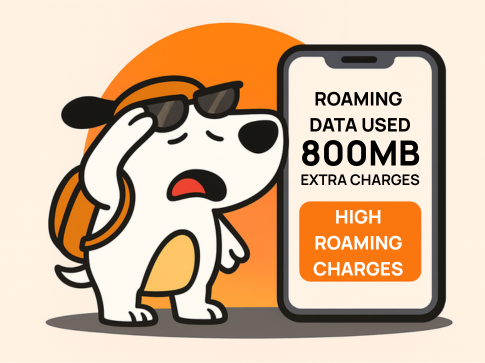What to Do After a Cyclone: Staying Safe & Connected
- shafirar
- Mar 14
- 3 min read
Updated: Apr 4
Cyclones can leave behind significant damage, disrupting homes, infrastructure, and communication networks. In the aftermath of a storm, ensuring your safety and reconnecting with loved ones is crucial. Here’s a practical guide on what to do after a cyclone to stay safe and restore your mobile and internet services.

1. Prioritise Safety First
Even after the storm has passed, dangers can remain. Before stepping outside or returning home, take these precautions:
Listen to official updates
Check emergency broadcasts via radio, TV, or official websites to confirm that it's safe to move around.
Be cautious of floodwaters
Avoid walking or driving through flooded streets, as water may be deeper or more contaminated than it appears.
Check for structural damage
Look for cracks, loose roofing, and unstable walls before entering.
Turn off utilities if needed
If you suspect gas leaks or electrical damage, turn off the main power and gas suppl
2. Check Your Essential Services
After a cyclone, electricity, water and internet services may be down. Here’s how to handle outages:
Electricity: If your power is out, report it to your provider and use battery-powered lights instead of candles to avoid fire hazards.
Water Supply: Check local alerts to see if tap water is safe to drink. If in doubt, boil water before use.
Mobile and Internet: Networks may be congested or down so try switching between Wi-Fi and mobile data or using text messages instead of calls. If your home internet is offline for an extended period, consider using a mobile hotspot or public Wi-Fi at emergency centres.
3. Stay in Touch with Loved Ones
Let people know you’re okay and check in with those affected. If phone lines are congested, use these alternative methods:
Send text messages instead of making calls.
Use social media or messaging apps to check for updates.
Listen to emergency broadcasts for recovery information.
If you need urgent assistance, contact emergency services and relief organizations for shelter, supplies, and medical support.
4. Seek Financial and Community Assistance
If your home or business has been damaged, you may be eligible for government assistance. Here’s what to do:
Check for disaster relief payments
Governments often provide financial aid for affected residents.
Contact your insurer
Start your claim early, providing photos and a detailed report of damage.
Reach out to community groups
Local charities and volunteer organizations often provide free food, shelter, and supplies.
5. Restore Your Digital and Mobile Connectivity
If your home internet is down or your mobile signal is weak, here’s how to stay connected:
Check for Network Outages
Visit your telco provider’s website or social media pages for outage updates.
Try a different network
If your provider is experiencing issues, consider using a SIM card from another carrier temporarily.
Use backup power for devices
If the power is still out, charge devices using a car charger or portable power bank.
Find public Wi-Fi spots
Libraries, emergency shelters and community centres often provide internet access.
Final Thoughts
Recovering from a cyclone can be overwhelming, but prioritising safety and communication will make the process easier. We understand how important staying connected is and we’re here to help. If you’re experiencing service disruptions, don’t hesitate to reach out.
Stay safe and take care.
Need assistance? Contact us today.


